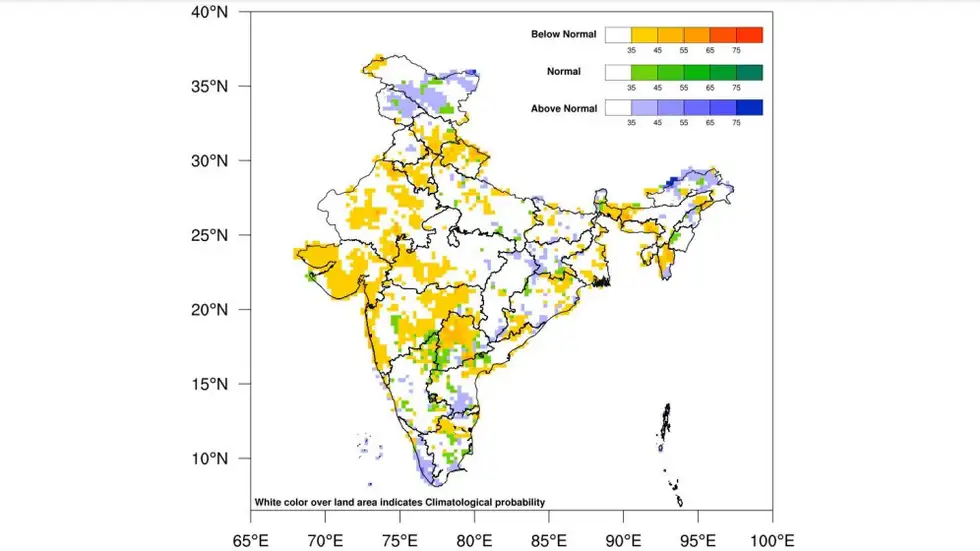
Now that the countrywide temperatures have gradually begun rising, many pluviophiles have already started yearning for the respite that only monsoon rains can provide. Alas, the monsoon season is at least two months away still, although an early indication of its expected performance has now been provided by the India Meteorological Department (IMD).
In its long-range forecast released on Tuesday afternoon, the IMD has predicted the southwest monsoon rains to be ‘normal’.
The seasonal precipitation during the four-month period between June to September is expected to be 96% (with a model error of ± 5%) of the long-period average, which amounts to 83.5 cm. The countrywide seasonal average, calculated for the period 1971-2020, is 87 cm.
Interestingly, this is the fifth straight year of normal or above-normal rainfall predictions for the monsoon season. This spells good news for India, as normal rain is crucial for sufficient agricultural yield and the replenishing of reservoirs critical for drinking water and power generation across the country.
The forecasted spatial distribution hints at normal to above-normal rainfall activity in many parts of Northeast, South Peninsular and adjoining East-Central India, along with some parts of Northwest India. On the flip side, normal to below-normal seasonal precipitation has been predicted in parts of West-Central India and some pockets of Northwest and Northeast India.
As far as the broader climatic systems are concerned, the climate models predict the development of positive Indian Ocean Dipole over the Indian Ocean and El Niño conditions over the equatorial Pacific region during monsoon.
Their impacts on monsoon’s performance will be interesting to see, considering the former amplifies the monsoon rains over the Indian subcontinent, whereas the latter serves as a dampener.
The IMD generates these long-term predictions using the Multi-Model Ensemble (MME) forecasting system, which is based on coupled global climate models (CGCMs) from different prediction centres, including IMD’s Monsoon Mission Climate Forecast System (MMCFS).
The Indian agency will also be providing an updated monsoon forecast for this year in the final week of May 2023, right before the season kicks off.
In his presentation, Kevin Muxlow, COO of Urus, mentioned four building blocks how farms can improve both their business economics and become more sustainable: (animal) genetics, people, management, and data & technology. The subsequent panel disucssion went into more details and proposed more ways of implementing such solutions.
Creating the right environment:
Collaboration between the public and private sectors can provide resources, access to finance and create an enabling environment for innovation, resulting in a win-win situation for farmers and businesses. Maria Zampaglione from Elanco, an animal health company, explained how her company’s shared value strategy, implemented together with the Bill and Melinda Gates Foundation, provides veterinary medicines to small and medium-sized farms in Africa. Thereby they are improving animal health on the one hand and giving her company a foothold in Africa on the other. The key to such public-private partnerships, she said, is to provide solutions and high-quality products adapted to local conditions and farmers’ needs, taking into account the whole value chain to improve the link between markets and farmers.



